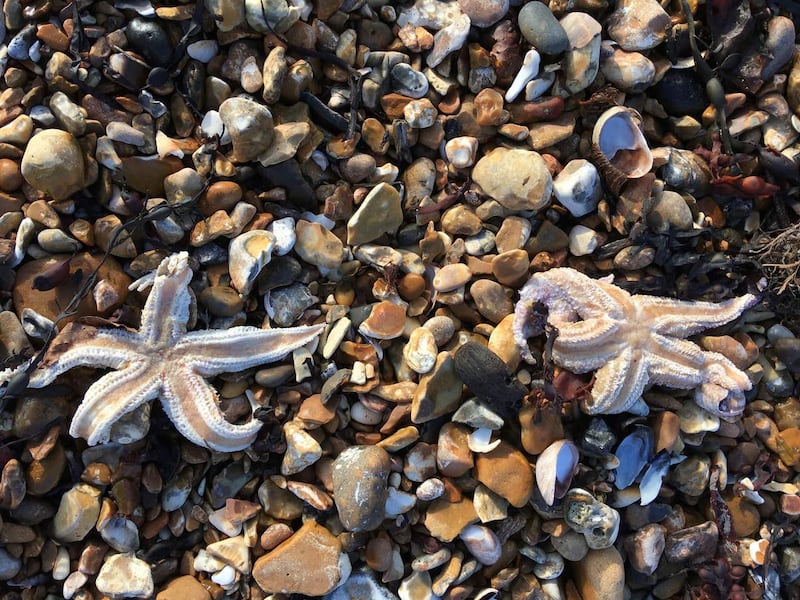The “love hormone” released in humans when they find their soulmate causes starfish to turn their stomachs inside out, scientists have discovered.
Oxytocin is released in the brain when people fall in love and has been shown to stifle hunger in some animals.
But researchers who injected the chemical into starfish found it triggered their feeding mechanism of “everting” their stomachs and adopting the posture they use for eating.
The team, from Queen Mary University of London, said the experiment could provide answers to control the feeding behaviour of a species of starfish called crown of thorns, which feed on coral and have “a devastating impact” on Australia’s Great Barrier Reef.
Starfish with its stomach everted @HornimanMuseum today pic.twitter.com/LMCDvdJOD9
— Maurice Elphick (@MauriceElphick) September 10, 2017
Professor Maurice Elphick, the study’s lead author, said: “Our study has provided important new evidence that oxytocin-type molecules are important and ancient regulators of feeding in animals.
“So oxytocin is much more than a ‘love hormone’ – perhaps especially for animals like starfish that don’t fall in love.”
Dr Esther Odekunle, formerly a PhD student at the university, added: “If the ‘love hormone’ plays a role in the feeding behaviour of the crown of thorns starfish, then this research may provide a basis for the development of novel chemical methods to control their appetite for coral.”
Oxytocin-type molecules have been acting in the nervous systems of animals for more than half-a-billion years, the researchers said.
But the study, published in the BMC Biology journal, highlighted the contrasts in the chemical’s role across species. It has been found to inhibit feeding behaviour in mice.
Starfish were injected with the hormone and within a few minutes started bending their arms and adopted a ‘humped’ posture, similar to that used when feeding – and the stomach was then everted from the mouth.
The animals feed naturally by climbing on top of shellfish prey and adopting the posture, then employing the pulling power of tiny tube feet under each arm to pull apart the two valves of their prey.

The starfish then evert their stomach through the gap and into the body of the prey and digest the soft tissues into a soup-like mixture, which is then drawn back into the starfish as food.
Professor Elphick added: “What is fascinating is that injecting the hormone in starfish induces what is known as fictive feeding.
“The starfish are behaving as if they are feeding on a mussel or an oyster but no mussel or oyster is there to be eaten.”
The researchers also found the effect of oxytocin was so powerful it made starfish two to three times slower at righting themselves when flipped over – an important defence behaviour, as they can be upturned by strong waves.
They also found both the hormone and its receptor were found in many regions of the starfish body – including the central nervous system and the stomach.
These findings are consistent with the striking effects of the oxytocin-like molecule on starfish behaviour, the team said.








